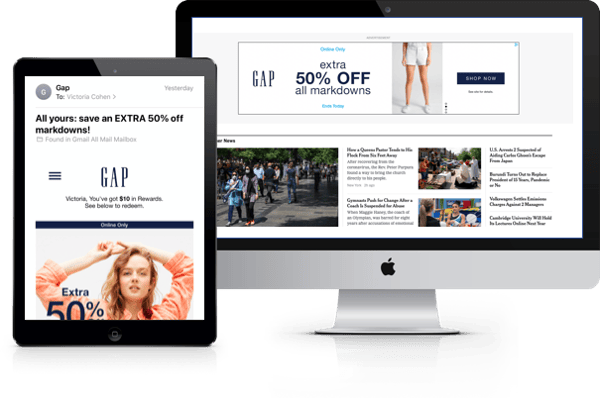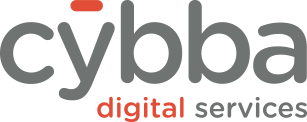Visit Website. Abandon Shopping Cart. See Retargeting Ad. Repeat.
Sound familiar? It should. It describes a good ol’ fashioned cookie-based website retargeting sequence. There’s a reason why we all know it– it works! Website visitors who are retargeted are 43% more likely to convert.
In the traditional sales funnel, retargeting had been considered a bottom of the funnel tool– the final step before a conversion was complete. It was very successful within that framework and system of benchmarking.
More recently, however, the customer journey has evolved from a top-down funnel to a never-ending loop (see below), one in which there are unlimited ways to engage with your past, existing, and future customers. So where does retargeting fit into this loop now?

For starters, retargeting is no longer relegated to one customer stage. Retargeting techniques can be used to build awareness, build interest, educate, and foster brand loyalty post-purchase. We’ll highlight some tactics that can be used with classic website retargeting to increase conversions and customer lifetime value.
1. Post-Purchase Segmentation
What is it?
A non-intrusive way to re-engage with customers who purchased a product or service that requires a refill or replacement after a certain amount of time. Post-purchase segments are cookie-based and have a lifespan of approximately 60 days, after which the cookie is no longer useful.
How is it used?
Segmenting customers based on product purchases can be helpful for any business that sells products that are used on a regular basis and need to be replaced without interruption to use. Contacting customers before their product runs out prevents them from defecting to a competitor to refresh their supply. This approach is particularly effective for companies that sell pet food, makeup, vitamins, CBD and anything else that needs to be regularly resupplied.
Post-purchase segmentation can also help with building loyalty by facilitating communication that is educational and not conversion-driven. In the example below, Dyson sends out emails to owners of their vacuums to remind them to wash their filters every few months. This gesture does not lead directly to a product purchase, but it provides tangible value to a customer in the moment and helps build brand affinity.

2. Email Pixels
What is it?
After a customer opens an email containing a pixel (a type of cookie), they are served display ads for that brand on the websites they later visit. This is done via a pixel that is added to the html of an email. This pixel “cookies” users who open the email and can be applicable for 3-6 weeks depending on the email campaign.
How is it used?
This tactic aids with brand awareness and follow up on email-initiated sales events. Brands use emails in a wide variety of campaigns, but are often lost in cluttered inboxes and forgotten by busy minds. Email pixel campaigns expand the reach of your messaging by continuing to expose your customers to additional messaging in placements across the internet.

3. Audience Matching
What is it?
Audience matching allows for retargeting based on a comprehensive –yet anonymized– profile of a customer’s online behavior. It works by matching customer PII (personally identifiable information), such as emails, phone numbers, addresses, to display and social inventory with an up to a 95% match rate. This allows for robust management of campaigns over the entire lifetime of a customer.
How is it used?
This is an ideal way for brands with longer periods of time between conversion events to reengage with a high degree of accuracy. Industries that sell luxury items or offer high-end services, such as consumer electronics or hospitality, can use audience matching to send annual reminders to customers to upgrade to the latest version of product they previously purchased or rebook a high-ticket trip.

These are just a few of the ways in which you can keep customers in the new customer journey loop and interacting with your brand beyond their purchase. Like the loop itself, the opportunities to re-engage customers are endless. For more information on these 3 specific tactics, watch our full webinar Redefining Your Retargeting Strategy or reach out to a Cybba specialist to discuss how to revamp your own reengagement strategy.


